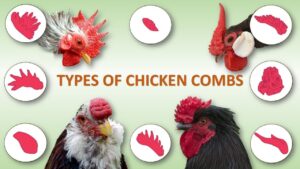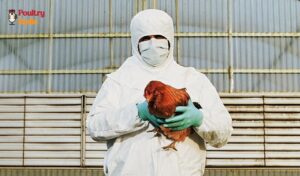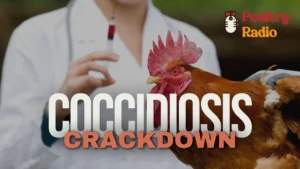Infectious Laryngotracheitis (ILT) in Chickens
Infectious Laryngotracheitis (ILT) is a highly contagious and acute viral respiratory disease that affects birds, mainly chickens. It is caused by the Infectious Laryngotracheitis Virus (ILTV), also known as Gallid Herpesvirus 1 (GaHV-1). It’s been reported from numerous regions across the USA where poultry farming is concentrated, and from many other countries as well.
ILT is characterized by inflammation and the formation of lesions (Bloody exudate) in the larynx and trachea of infected birds. Although all age groups are susceptible, most outbreaks in chickens are in broilers older than 4 weeks old or mature or nearly mature chickens.
It takes anywhere from 6 to 14 days from when the bird becomes infected to when it shows clinical signs allowing for asymptomatic spread during this time. There is a chance that 5 to 100% of the flock may become sick and there is up to 20% mortality rate.
Symptoms of Infectious laryngotracheitis (ILT) in Poultry?
- Coughing
- Gasping
- Loud wheezing sounds
- Discharge of bloody mucus during coughing and head shaking
- Beaks, feathers, and faces might be seen as bloody
- Reddening of conjunctiva
- Productivity levels can fluctuate when it comes to laying flocks.
- Affected birds may experience a loss of appetite and decreased activity levels.
- High morbidity with mortality of 10-20%
- Milder strains don’t cause much harm and may only lead to mild respiratory problems and a slight drop in egg production.

After recovering, birds continue to carry the virus for life, and can infect susceptible birds. The latent virus may become active again when birds experience stress. Infections can also be spread mechanically. There have been numerous outbreaks linked to the transportation of infected birds or contaminated equipment and litter.
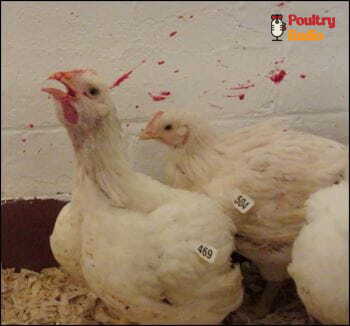
How does Infectious Laryngotracheitis ILT spread?
The most common way that ILT is transferred to susceptible birds is by close contact with infected birds. The virus can be spread between barns and farms via inanimate objects, such as contaminated equipment, vehicles, clothing, and footwear.
Winds can also carry the virus downwind of infected barns and manure. Enhanced biosecurity is therefore critical to prevent spread.
What are the gross Lesions of Infectious laryngotracheitis (ILT)?
The conjunctiva, larynx, and trachea are where lesions are most common.
In severe form, bloody exudate is seen in the trachea.
Severe degradation of mucosa with hemorrhage.
Dead birds may have caseous plugs in the trachea.
How is Infectious laryngotracheitis (ILT) diagnosed?
Your veterinarian may submit sick or dead birds for post-mortem and tissue examinations. Findings consistent with ILT will be confirmed with testing for viral DNA using PCR (polymerase chain reaction) testing.
To be considered a case of ILT, 2 of the following 3 criteria must be met;
- Clinical signs consistent with Infectious Laryngotracheitis ILT
- Evidence of the virus on tissue examination (viral inclusion bodies)
- PCR positive test
Differential Diagnosis
It can be challenging to distinguish ILT from other diseases as the clinical signs and necropsy lesions may look similar to those of Newcastle disease, Infectious Bronchitis, Avian Influenza, and wetpox. Particularly, the signs of ILT and wet pox can appear identical both during the examination and after the animal has passed.


To conclusively diagnose ILT, we examine tissue samples from the eyelid (conjunctiva) and trachea of affected birds under a microscope. The presence of intranuclear inclusion bodies typical of ILT confirms the diagnosis. These inclusion bodies start to appear approximately 3 days after infection and are only detectable for up to 5 days. Since the affected cells deteriorate and are shed as the disease progresses, early detection and timely collection of bird samples are crucial for an accurate diagnosis.
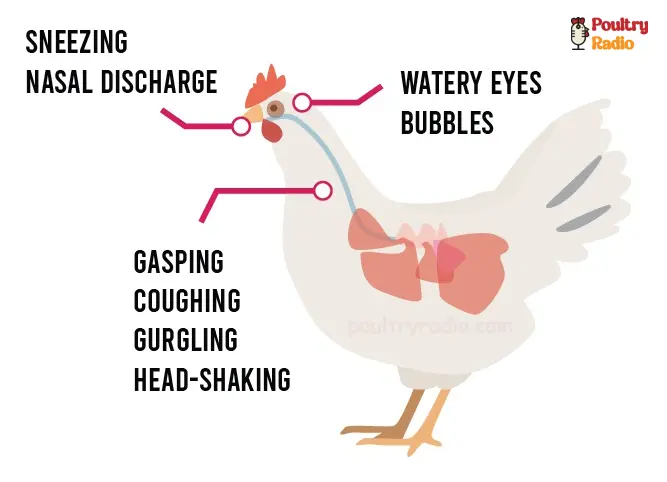
Prevention and Control of ILT
- Infectious laryngotracheitis is frequently prevented through vaccination. There are live attenuated and inactivated vaccines available, and vaccination approaches change depending on the type of flock and the prevalence of the disease in the area.
- To stop ILTV from entering the environment and spreading, strict biosecurity precautions are necessary. These precautions include separating young birds, cleaning equipment, and restricting public access to poultry farms.
Infectious laryngotracheitis Treatment
Unfortunately, there is currently no effective treatment for ILT, but in severe cases, antibiotics can be used to manage secondary infections.
Important management techniques to stop ILT from spreading within and between flocks are as follows:
ILT Vaccination:
- If your previous flock was infected or if you are close to an infected premises, it is recommended that broiler chicks be vaccinated for ILT for two successive crops.
- If you are a producer in the FBCC biosecurity advisory area, discuss with your veterinarian about vaccinating your flock for infectious laryngotracheitis (ILT).
Manure management:
- Heat-treat litter at 38° C (100° F) for 100 hours before thorough cleanout and disinfection.
- When possible, wait 8 weeks before moving manure off the premises. On-site manure must be covered to reduce spread. If manure must be moved, ensure the manure hauler is aware of ILT on your farm and employ appropriate biosecurity practices including securely covering manure in transit.
Zoonotic Risk of Infectious laryngotracheitis (ILT)
Since there is no evidence that infectious laryngotracheitis may infect humans, it is not considered a zoonotic disease. ILT only affects birds, mainly chickens.
Frequently Asked Questions
What is ILT disease in poultry?
Infectious Laryngotracheitis (ILT) is a highly contagious and acute viral respiratory disease that affects birds, mainly chickens. It is caused by the Infectious Laryngotracheitis Virus (ILTV).
What is the ILT vaccine for chickens?
Innovax-ILT is a vaccine that helps keep chickens safe from infectious laryngotracheitis (ILT) and Marek’s disease (MD).
What is the treatment of ILT?
Unfortunately, there is currently no effective treatment for ILT, but in severe cases, antibiotics can be used to manage secondary infections.
Why is my chicken coughing up blood?
Infectious Laryngotracheitis (ILT), a herpesvirus infection, is a less frequently encountered disease. It leads to significant inflammation of the trachea (windpipe), resulting in birds coughing to the point where they may start coughing up blood.


